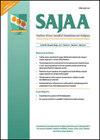Preparing anaesthesiologists to safely care for patients with COVID-19: an observational study of a simulation course
IF 0.3
Q4 ANESTHESIOLOGY
Southern African Journal of Anaesthesia and Analgesia
Pub Date : 2022-01-01
DOI:10.36303/sajaa.2022.28.1.2602
引用次数: 0
Abstract
Background: Anaesthesiologists are at high risk for exposure to SARS-CoV-2. We describe the development, implementation and efficacy of a high-fidelity simulation course for anaesthesiologists in response to this threat. Methods: This is an observational study of preparedness conferred by a simulation course. The following four knowledge gaps were identified: i) personal protective equipment (PPE) selection and donning/doffing;ii) operating room and anaesthesia machine turnover;iii) routine and difficult airway management;and iv) emergent airway management and Advanced Cardiac Life Support (ACLS) protocols. Four simulations were developed and offered to faculty, residents and Certified Registered Nurse Anaesthetists (CRNAs) at an anaesthesiology department. A survey estimated prior knowledge and assessed knowledge gained after the course. Results: Prior to the simulations, 27% and 26% of the participants estimated ability, respectively, to don and doff PPE, compared to 99% of the participants who demonstrated knowledge after the simulations: donning, odds ratio (OR) = infinity (19.6, infinity);doffing, OR = infinity (19.9, infinity). Prior to the simulations, 28% of the participants estimated knowledge specific to airway management;while after the simulations, 84% of the participants identified correct principles of airway management (OR = 9.1 [4.3, 20.2]). Prior to the simulations, 15% of the participants estimated knowledge of principles guiding emergency airway management and/or ACLS protocols, compared to 94% of the participants who correctly identified those principles after the simulations (OR = infinity [21.9, infinity]). Only 18% of clinicians estimated that they were competent prior to the simulations, while 89% of clinicians demonstrated competency on the written survey after the simulations (OR = 37 [10.8, 212]). Conclusion: Our results suggest that this simulation course effectively prepared anaesthesiology faculty, residents and staff to select appropriate PPE, and don and doff it, as well as apply best practices during airway management and ACLS protocols.准备麻醉师安全护理新冠肺炎患者:模拟课程的观察性研究
背景:麻醉师接触严重急性呼吸系统综合征冠状病毒2型的风险很高。我们描述了针对这种威胁为麻醉师提供的高保真模拟课程的开发、实施和效果。方法:这是一项由模拟课程授予的准备情况的观察性研究。发现了以下四个知识空白:一个人防护装备的选择和穿脱;ii)手术室和麻醉机的周转;iii)常规和困难的气道管理;以及iv)紧急气道管理和高级心脏生命支持(ACLS)协议。开发了四个模拟,并提供给麻醉学系的教员、住院医师和注册护士麻醉师(CRNA)。一项调查估计了先前的知识,并评估了课程后获得的知识。结果:在模拟之前,27%和26%的参与者分别估计了穿戴和脱下PPE的能力,而在模拟之后展示知识的参与者中,这一比例为99%:穿戴,比值比(OR)=无穷大(19.6,无穷大);doffing,OR=无穷大(19.9,无穷大)。在模拟之前,28%的参与者估计了气道管理的特定知识;而在模拟之后,84%的参与者确定了正确的气道管理原则(OR=9.1[4.3,20.2])。在模拟之前,15%的参与者估计了指导紧急气道管理和/或ACLS协议的原则知识,相比之下,94%的参与者在模拟后正确识别了这些原理(OR=无穷大[21.9,无穷大])。只有18%的临床医生估计他们在模拟前有能力,而89%的临床医生在模拟后的书面调查中表现出了能力(OR=37[108.212])。结论:我们的研究结果表明,这门模拟课程有效地为麻醉师、住院医师和工作人员提供了选择合适的个人防护装备、穿戴和脱下的准备,并在气道管理和ACLS协议中应用最佳实践。
本文章由计算机程序翻译,如有差异,请以英文原文为准。
求助全文
约1分钟内获得全文
求助全文
来源期刊

Southern African Journal of Anaesthesia and Analgesia
ANESTHESIOLOGY-
CiteScore
0.90
自引率
0.00%
发文量
10
 求助内容:
求助内容: 应助结果提醒方式:
应助结果提醒方式:


